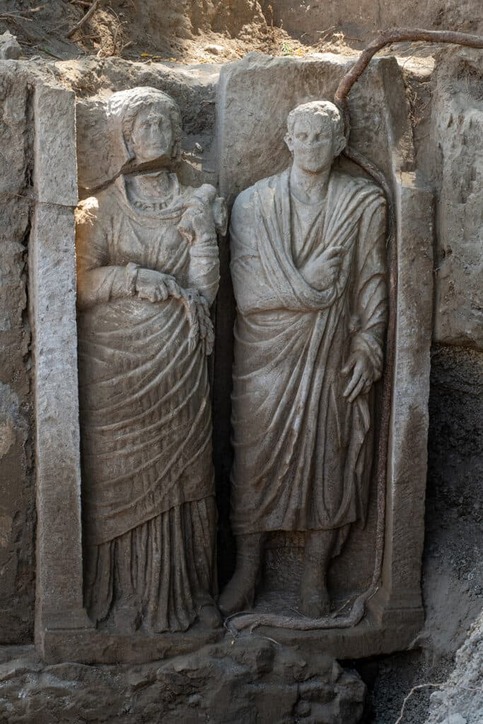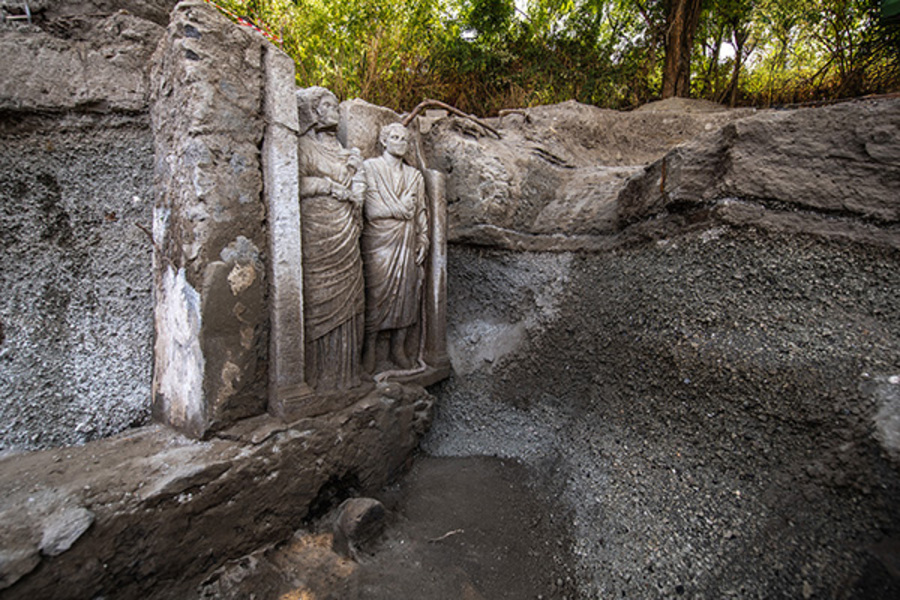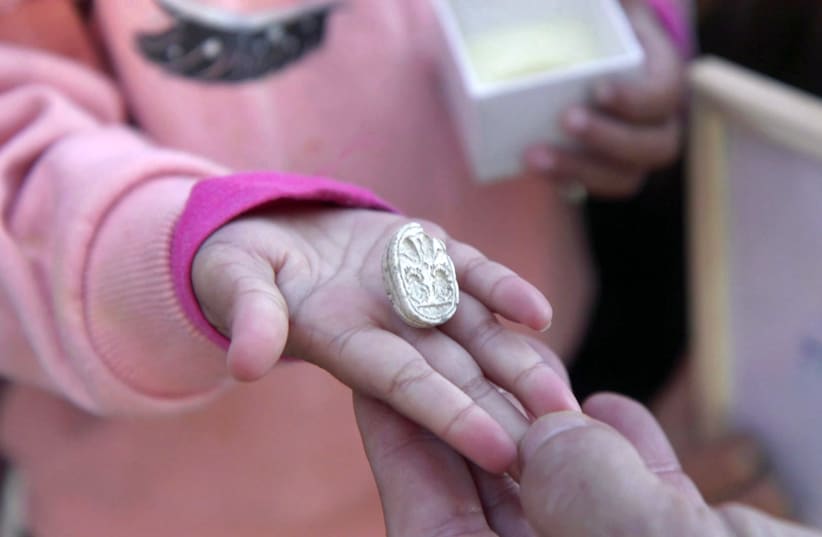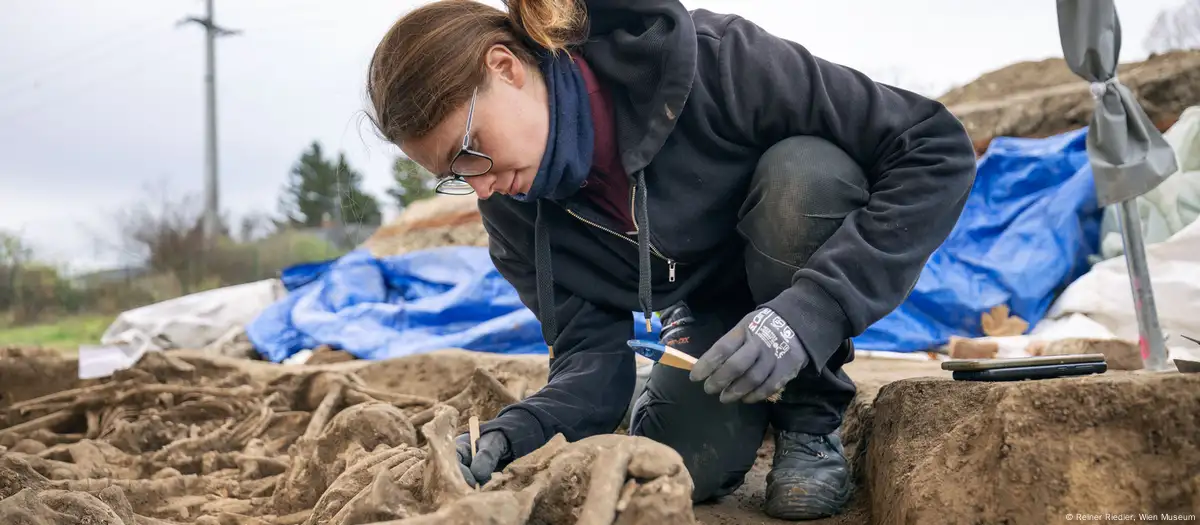A striking discovery illuminating the historical fabric of Pompeii has been made in the Porta Sarno necropolis. The “Investigating the Archaeology of Death in Pompeii” project, a collaboration between the Universitat de València and the Pompeii Archaeological Park, has unearthed an extraordinary tomb relief depicting a couple almost life-size. This find offers new insights into the funeral practices and social dynamics of the ancient city.
Discovery Sheds Light on Pompeii’s Social Life
Led by Professor Llorenç Alapont, the project aims to deepen our understanding of the social identities of the deceased in this ancient city, which was destroyed by the eruption of Mount Vesuvius in 79 AD. The high-relief figures have been moved to the Palaestra Grande for meticulous restoration and will be displayed in the “Being a Woman in Ancient Pompeii” exhibition, set to open on April 16, 2025. Visitors will have the opportunity to observe the restoration process within the exhibition space.
Ongoing Excavations at the Porta Sarno Necropolis
Excavations in the area began in July 2024, although it had been previously examined in the 1990s during the construction of a second line for the Circumvesuviana railway. A 1998 excavation campaign documented over 50 cremation burials marked by stelae and monumental structures, including a large funerary arch.
Recent investigations have revealed a monumental tomb characterized by a large wall with several niches, at the top of which the newly discovered relief of a man and woman is carved. This suggests that the couple may have held a significant social presence in Pompeian society. Intriguingly, the symbolism surrounding the female figure indicates she may have been a priestess of the goddess Ceres, highlighting her involvement in the city’s religious life.

Artistic Relief from the Late Republican Period
The artistic quality and stylistic features of the relief date it to the Late Republican period, a time when local elites reinforced their identities through imposing funerary monuments. Gabriel Zuchtriegel, Director of the Pompeii Archaeological Park, emphasized the project’s potential to expand knowledge about life in Pompeii’s extramural areas, noting past collaborations with the Universitat de València that led to significant discoveries such as the tomb of Marcus Venerius Secundio.
Multidisciplinary Research and Analyses
The multidisciplinary team, consisting of archaeologists, architects, restorers, and anthropologists, meticulously recovered and analyzed the remains found in the Porta Sarno necropolis. The team published initial analyses and conclusions in the E-Journal of the Excavations of Pompeii, presenting hypotheses about the identity of the figures in the relief and the funerary context of their discovery.
Evidence of Funeral Rituals
In addition to the relief, excavations have uncovered evidence of funeral rituals, including ceramic remains and glass ointment jars, likely used in libation ceremonies. These rituals, which involved pouring perfumed oils, were essential for creating a multisensory atmosphere during funerals and counteracting the unpleasant odors associated with death.
A New Perspective on Pompeii’s Social and Religious Landscape
As excavations continue, the findings from the Porta Sarno funerary area promise to reshape our understanding of Pompeii’s social and religious landscape. The discoveries not only highlight the complexity of funerary customs but also underscore the active participation of women in religious practices, challenging previous assumptions about gender roles in ancient Roman society.
The ongoing research emphasizes the need for further documentation and exploration of this significant archaeological site as it continues to reveal the rich tapestry of life and death in ancient Pompeii.
Archaeological Park of Pompeii
Cover Image Credit: Alfio Giannotti / Parco archeologico di Pompei (Archaeological Park of Pompeii )





